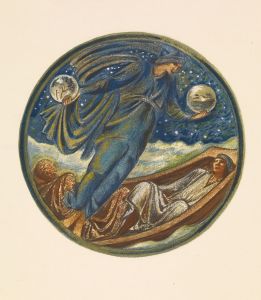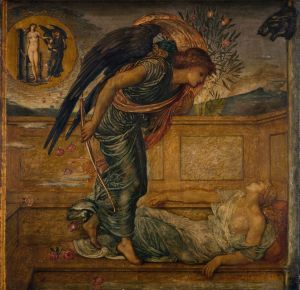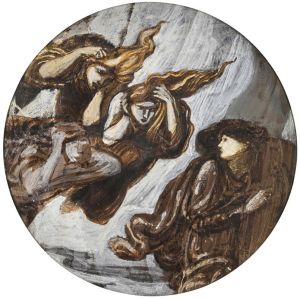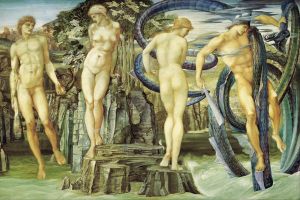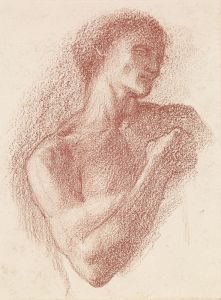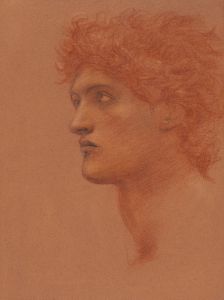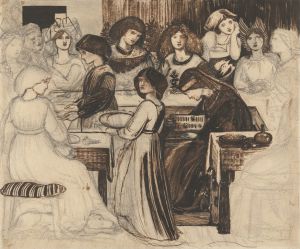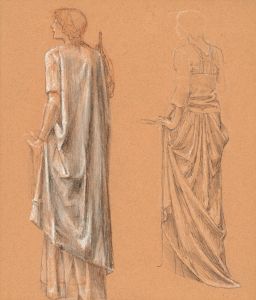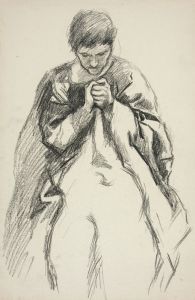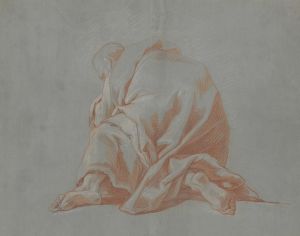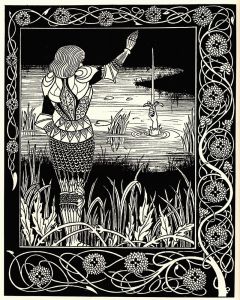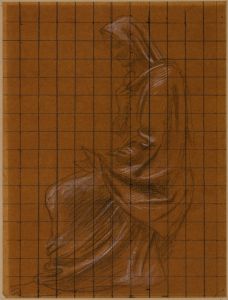
Study of a draped female figure for ‘The Sleep of Arthur in Avalon’
A hand-painted replica of Sir Edward Coley Burne-Jones’s masterpiece Study of a draped female figure for ‘The Sleep of Arthur in Avalon’, meticulously crafted by professional artists to capture the true essence of the original. Each piece is created with museum-quality canvas and rare mineral pigments, carefully painted by experienced artists with delicate brushstrokes and rich, layered colors to perfectly recreate the texture of the original artwork. Unlike machine-printed reproductions, this hand-painted version brings the painting to life, infused with the artist’s emotions and skill in every stroke. Whether for personal collection or home decoration, it instantly elevates the artistic atmosphere of any space.
The artwork Study of a Draped Female Figure for ‘The Sleep of Arthur in Avalon’ is a preparatory drawing by the British artist Sir Edward Coley Burne-Jones (1833–1898). Burne-Jones was a prominent figure in the Pre-Raphaelite movement, known for his intricate and highly symbolic works that often drew inspiration from mythology, literature, and medieval themes. This particular study was created as part of the preparatory process for his monumental painting The Sleep of Arthur in Avalon, one of his most ambitious and significant works.
The Sleep of Arthur in Avalon depicts the legendary King Arthur in a state of eternal rest, surrounded by attendants and mourners in a dreamlike, otherworldly setting. The painting reflects Burne-Jones’s fascination with Arthurian legend and his interest in themes of mortality, transcendence, and the passage of time. The study focuses on a single female figure, draped in flowing garments, likely one of the attendants or mourners featured in the final composition. The drawing demonstrates Burne-Jones’s meticulous attention to detail and his commitment to achieving a sense of grace and harmony in his figures.
The study showcases Burne-Jones’s skill in rendering drapery and the human form, emphasizing the fluidity and elegance of the figure’s pose. It is executed with precision, highlighting the artist’s dedication to preparatory work as a means of refining his ideas and compositions. Such studies were a crucial part of Burne-Jones’s creative process, allowing him to explore different poses, gestures, and arrangements before committing them to the final painting.
The Sleep of Arthur in Avalon was commissioned in 1881 by George Howard, 9th Earl of Carlisle, a close friend and patron of Burne-Jones. The painting was intended to adorn the library of Naworth Castle, Howard’s family estate. However, Burne-Jones continued to work on the painting intermittently for over 17 years, and it remained unfinished at the time of his death in 1898. The preparatory studies, including this drawing, provide valuable insight into the artist’s vision and working methods.
The study is now recognized as an important example of Burne-Jones’s draftsmanship and his approach to developing complex, multi-figure compositions. It is held in a private collection or museum, though its exact location may vary depending on exhibitions or loans. The drawing continues to be appreciated for its aesthetic qualities and its role in the creation of one of Burne-Jones’s most celebrated works.





